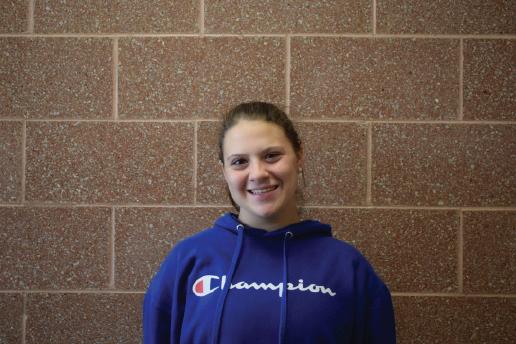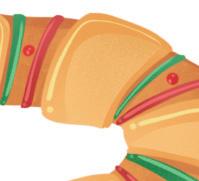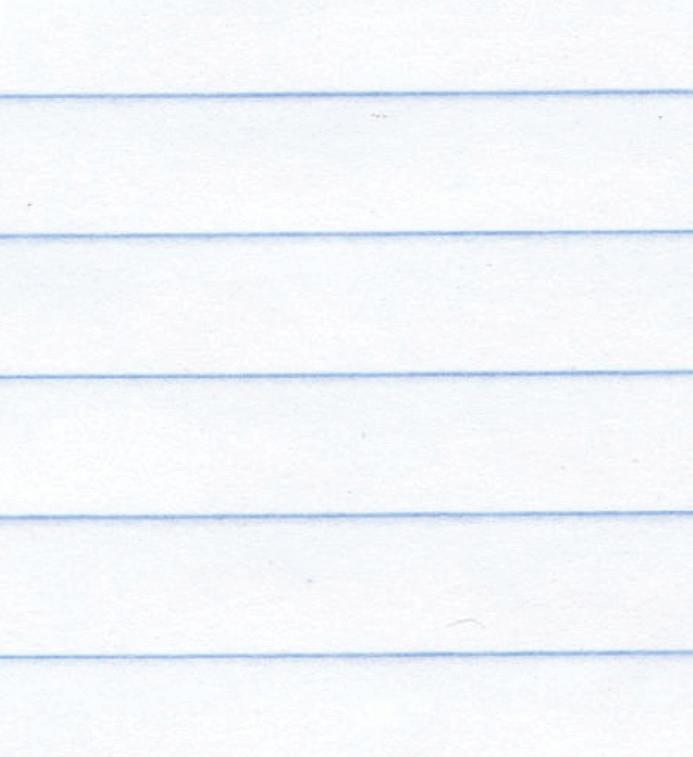Enduring Tribulations








































































Tiger Times Staff



















Editorial Board
Reporters
Cup controversy
Observers share thoughts on Qatar’s handling of the World Cup
Alex Duer duerale000@hsestudents.orgHosted every four years, the FIFA World Cup is the most prestigious soccer tournament in the world, in which 32 countries represented by their national teams compete over 30 days until one is crowned the world champion, receiving a trophy made of almost pure gold. Just as important as the event itself, however, is the host, as the selected nation must plan, design and put on 30 days worth of soccer, festivals and much more.
e host of this year’s rendition was decided back in 2010, in which FIFA selected Qatar over the U.S. in the nal round of voting. It marked the rst time that a Middle-Eastern country would host the event, and the second for the continent of Asia.
“Although it would have been nice to have the World Cup here in the U.S. this year, we did win the 2026 bid, so [Qatar] is alright with me,” junior Amr Mohamed said.


























When they received the bid one decade ago, Qatar realized that they would need to quickly build seven stadiums, 109 hotels and plenty of accessible transportation. To achieve this, they hired over 30,000 immigrant workers on stadiums alone, along with large portions of their already established migrant workforce. Unfortunately, according to some of the migrants that were interviewed by BBC during construction, workers faced poor living conditions, extreme heat and were shorted money they were promised by the
government.
“I most de nitely think that Qatar has mismanaged the situation,” junior Gurliv Gill said. “Being overworked and not being allowed to reach your family while abroad is terrifying. Reading about just what the workers faced sounds unreal because there is this notion that internationally, unfair working conditions have been discarded when that is not the case at all.”
As a result, many workplace deaths occurred. While world cup o cials argued that the number was somewhere between 400 and 500, some western media outlets reported numbers in the thousands.
Qatar has denied said claims, stating that the number of deaths matches past events of a similar scale.
“I think there have been way more deaths than there have been accounted for,” Gill said. “Because why would Qatar openly admit to being responsible for all of the deaths? I think the number has to be equal to or greater than a thousand.”
A er jumping the hurdle of building infrastructure, Qatar was then put on the spot about their LGBTQ record. e country’s religious code of law states that homosexuality is punishable by death, although no executions have ever been recorded. Qatar responded, stating that people identifying as LGBTQ would be allowed to attend and would not be discriminated against, but asked visitors to refrain from public acts of a ection in order to
World Cup construction
By the numbers:
$220b
In total spent by Qatar to stage the event, according to Forbes Magazine














2.45m
Total number of visitors through the rst 13 days of the event, according to FIFA.com
$600-1,600
Range of ticket prices for knockout stage matches converted into U.S. dollars from Qatari Rials by Forbes Magazine
respect the country’s culture.
“I think they are upholding that promise,” freshman Yanni Nahas said. “ ey are allowing LGBTQ people in to watch. I think it is a fair request because people need to respect the culture where they are.”

Some fans and players did not take well to Qatar’s request, while many protested by wearing LGBTQ-related clothing and accessories, despite the country’s warning. While some see it as justi ed, others have defended the country.
“It does not make sense to me why people feel the need to upset Qatari o cials by wearing pride-related clothing,” Nahas said. “ ey have no reason to show it o because no one cares.”













In response, some fans from all across the globe banded together to boycott the games: some canceled their plans to go, while others abstained from watching entirely. Despite

picking up some media attention, the boycotts have not seemed to a ect the procession of the games.
“I do not think it changed much since most of FIFA’s revenue comes from sponsors and broadcast rights,” Mohamed said. “In 2018, $4.6 billion out of the $6.4 billion generated came from TV rights. It should not a ect them whether people decide to tune in or not.”
With the power and in uence FIFA has, Mohamed believes that the controversy of this year’s World Cup will not be overly signi cant going forward.
“ ere has been controversy, but I do not believe it has damaged their reputation because this has happened in the past,” Mohamad said in relation to the cups held in 1978 and 2018. “Being one of the most in uential organizations in the world, it is not surprising that no one has challenged them yet.”
Qatar at a glimpse

To hunt or not to hunt
Indiana issues rst lifelong hunting ban to 25 year old poacher

 Emerson Elledge elledeme000@hsestudents.org
Emerson Elledge elledeme000@hsestudents.org
For the rst time ever, the state had issued a lifelong hunting suspension to 25 year old Hanson Pusey in West Lafayette. e crime that issued his ultimate sentence was hunting without permission, as well as the of a trail camera card, in Warren County, according to Fox59. e ban did not appear out of the blue, as Pusey had been illegally hunting in seven di erent states for the last three years.


“It makes me happy that Indiana actually stood up to something that is an issue instead of ignoring it,” sophomore Ava Heeg said Pusey’s sentencing involves house detention, lifelong suspension and a multitude of fees. What made Pusey’s case so unique is the sheer amount of evidence that was found incriminating him.
“ e problem with [poaching] is like any law, [say] it’s speeding, you give a ticket and they still speed,” former study hall teacher Lloyd Byrd said. You have to make it worth your while. [With poaching, the enforcement] starts taking points from your license. In this case, a lifetime ban is probably a good message to send and [if] you keep doing it, we’re gonna jack it up. What one person will laugh o because they got a $300 ticket versus a kid who gets a $30 ticket and freaks out. [Punishments are about] understanding the severity of what you’re doing.”
Poachers are discovered and incriminated by game wardens. Game wardens are assigned a patch of land which they have been instructed to patrol to investigate for hunters.

“Game wardens will come to you and rst ask to see your hunting license,” Byrd said. “If you have no deer tags and still have a hunting license, and you have a deer with you or something that you killed, you’re gonna get in trouble. I know one story where a gentleman who was poaching deer had a huge truck atbed. Now if you’re from the farm, [a] truck’s a very important thing and they con scated his truck. He actually had to pay over $5,000 to get it. [ e wardens] always say hit him where it hurts, and most o entimes, that’s in the wallet.”
With this monumental ban occurring, a renewed conversation over the ethics of poaching and hunting has spawned, creating a discussion including hunters and nonhunters alike.



“I don’t really agree with [hunting],” junior Morgan Reilly said. “It’s super violent for no reason. When little kids kill small animals, they get checked for mental problems, but when older kids/adults kill animals for fun it’s totally normal.”
People hunt for a variety of reasons. e three general ones tend to be a combination of the following: for food/survival, for sport/fun and for animal

population maintenance.
“I believe hunting is a great sport,” junior Jake Dick said.

“ e thought of hunting down animals for fun/sport is a way of doing what [humans] used to have to do to survive, with the circumstances being the only di erence. One was to survive, the other to honor the old ways.”
Some people, like Heeg, agree with hunting for certain reasons, but not other reasons. For example, the National Library of Medicine found that 87% of Americans supported hunting for food, but only 37% agreed with hunting for sport.

“I’m not the biggest fan of [hunting]. It’s ne if it’s part of people’s culture, but I don’t like that it’s considered a sport, or that people go do it for fun,” Heeg said.
ere can also be health risks associated with hunting. According to the Mayo Clinic, hunters are most commonly put at risk for heart attacks, injured backs and broken bones. Another health risk is brucellosis, which is a bacterial infection caused by bacteria from injured animals.
“I think [hunting is] bad because if the [hunters] don’t eat it, then there was really no reason for the animal to die. But if they do eat it, [the hunters could easily process the meat wrong and get food poisoning.
Last year, my entire family got food poisoning from one of my stepdad’s friends’ deer meat that he processed himself,” Reilly


said.
Another worry of those against hunting is the impacts that it has, both on the world and the hunter. Reilly believes that some potential environmental consequences include a rapidly decreasing population of animals leading to the butter y e ect on the food chain, but also believes that hunting can have drawbacks on the hunter’s mental health.

“People who go out to hunt as much as possible and are constantly killing animals, [that] cannot be good for their mental health,” Reilly said. “ e amount of death and blood someone would see from the constant hunting would eventually desensitize them to human blood and death,
potentially making them violent towards people and not just animals.”
For some, the line between hunting and poaching is blurry, despite the legal di erence between them. Hunting is de ned by Oxford Dictionary as “the activity of hunting wild animals or game, especially for food or sport,” whereas poaching is de ned by National Geographic as the illegal tra cking and killing of wildlife.
“Poaching is disgusting and those who do it should face criminal consequences,” Dick said.


“ e line [between hunting and poaching] should be drawn when it is for an event that raises money for the better side, [with] poaching being when
someone is hunting for personal gain. Hunting should be when he game is going towards a community item such as charity. Even if there is a prize for someone who brings in the biggest catch.”
Simply put, the key di erence between poaching and hunting is the possession or the lack thereof of a license. According to Byrd, the process of obtaining a license for deer hunting speci cally, although a timeconsuming process, is by no means a di cult one, compared to that of receiving a driver’s license.







“[A person has] to go and present their driver’s license,” Byrd said. “[ e administration] will do a background check to make sure that [the person is] not like a wacko or someone who has a problem with authority, because we’re all supposed to follow the rules. Once that’s done, there is a period, I think it’s four to six weeks, before you actually get your license.”
Reilly believes that in order for there to be long-term solutions for eliminating poaching and excessive hunting, it should start from the ground up with accessibility.



“If someone just feels the need to shoot something, shooting a target is much better than an animal,” Reilly said. “ e issue [of poaching and excessive hunting] could be stopped by having potentially more shooting ranges that are more accessible to people. Since it doesn’t cost much to go out and hunt in the woods, reducing prices for shooting ranges and at-home targets could be bene cial to the state of the environment that has been harmed from hunting.”

Extreme environmentalism




Climate change protesters target famous pieces of art to bring attention to their cause
 Malak Samara
Malak Samara
Climate change is a persistent problem increasing every year that goes by without reducing carbon emissions. According to NORA, Earth’s temperature has risen by 0.14 degrees Fahrenheit every decade since 1880. However, ever since 1981, Earth’s rising temperature every decade has more than doubled to 0.32 degrees Fahrenheit. Environmentalists have been trying to push for the prioritization of combating global warming, but at the rate the world has been going thus far, the negative e ects on the environment will be irreversible.
is has caused a new form of environmental protests that include targeting famous pieces of artwork in order to bring attention to how detrimental climate change will be if it continues growing at the caliber it has been.

“I think [taking care of the environment] is important because [climate change] is going to a ect and impact all of us sooner or later,” sophomore Claire Riebe said. “It already is impacting [us]. Right now it’s our only shot, so we need to just take immediate action and we need to make real signi cant changes now.”
Climate change can raise many disagreements, especially from

a political standpoint. A prime example of this is how President Joe Biden signed the U.S. back into the Paris agreement a er former President Donald Trump had pulled the country out. However, it is usually universally agreed that the planet needs to be maintained because otherwise there will be no future.
“ is is our home,” environmental club sponsor Daniel Mach said. “We need to be better stewards of the only place in the universe that can sustain life. ere is no other place that we can go. We have an obligation to care for what we have and make it better for future generations.”
While politics play a big part in the progression of global warming, there are still precautions everyday people can take to contribute to taking care of the Earth. Riebe emphasized reducing carbon footprints by composting or recycling as one way to do so. Mach on the other hand believes voting people into o ce who will use their power to make positive changes to the environment is a vital step Americans can take toward the right path.
“[In our country] we have this right to vote for people who can actually make these changes happen,” junior Andres Maldonado said. “As
samarmal000@hsestudents.org

an individual, the best you can do is work as a team with others to prop up these carbonneutral companies or convince companies that they need to be car carbon-neutral. [Also] vote for governments that will be carbon neutral.”



What most people nd concerning about the rise in global warming is that even with current-day inventions and progressions, the Earth is in a worse state than it was 200 years ago. Mach believes signi cant steps towards reducing climate change have not been put to fruition due to the hardships that people will endure, such as changing their lifestyles in order to achieve this.
Even though climate change is increasingly getting worse, there have been attempts to counteract the negative impacts it has had. One of the more recent examples is the Conference of Parties (COP) 27. It is an annual meeting between 197 countries a part of the United Nations to discuss climate change and negotiate how much money each country should contribute to help decrease collective carbon emissions. COP27 was held in Egypt, starting on Nov. 6 and ending on Nov. 20.
“I’m really glad that we’re getting together as a world,”
Maldonado said. “We can only really combat climate change with unity. [ ere are] bigger and smaller countries and they all have di erent e ects on the climate. If we all each have our individual goals, if we don’t work together as one, we’re not really going to get anywhere.”
Another way people are combating climate change is by bringing more awareness to the negative e ects it will have on the future. is is typically achieved through protesting and posting on social media. ere have been debates, however, on what is the best way to e ectively protest.
“[ e best way to protest is by] protesting in the streets and getting large amounts of people [to be involved],” Riebe said. “Keeping the focus on climate change and not trying to do something extravagant, is what’s going to get people to listen to the message most.”
A new form of protesting, involving artwork, has been recently trending, especially on social media. Environmentalists glue themselves to di erent pieces of famous artwork or obstruct them in some way. One of the more popular examples of protesting this way involved two environmentalists who threw tomato soup on Van Gogh’s painting and then proceeded to glue themselves to the wall and chant about how the environment needed to be prioritized. A more recent example includes environmentalists in Austria
defacing artist Gustav Klimt’s ‘Death and Life’ painting in a Vienna museum.



ere have been mixed opinions about protesting against climate change by targeting art. Some have condemned the new method because they feel like it does not achieve the overall message of combating climate change. Others have recognized that it does bring attention to the problem. Since people value important pieces of artwork, the obstruction of it would cause people to look into what happened and nd out it was a result of a cry for help for the environment.
“I understand that yes, it gets people talking and it gets attention,” Riebe said. “At the same time, I wonder if it’s a double sword. On one hand, you have people who become aware of the problem, but on the other hand, it overshadows the true message and the true purpose of that form of protest.”
Riebe also emphasized that those who did pay attention to the environmentalists a liated their purpose and cause with targeting important pieces of art and history. is caused more people to de ect the need to combat climate change. Mach believes that throwing tomato soup or gluing themselves to the walls is only adding to the pollution of the world, which comes in direct con ict with what they are protesting against.
While a lot of people are against destroying artworks in






order to send a message about the negative impacts of climate change, it is recognizable that the protesters feel as though doing so is their last resort. Maldonado believes that environmentalists needing to bring attention to as big of an issue as climate change is a problem itself and goes to show that they are utilizing whatever method they can. Riebe added to this acknowledging that in previous eras, protests that went to the extreme did work.
“I think historically, extremes work,” Riebe said. “For example the sit-ins during the civil rights era. Sometimes extremes can really work and get national media attention like the video [of the activists throwing tomato soup] got. But I think it’s what happens with that attention, that is what’s important.”
Art is typically used as an expression of the environment and has environmentalist messages ingrained in its history. erefore, Maldonado believes the solution is working with artworks instead of against them to continue gaining attention but still be respectful towards important artifacts.

“I think [environmentalists] should work on supporting art pieces to get natural pairs of eyes on their movement,” Maldonado said. “It’s just in really poor taste to take someone else’s message and mold it into your own. It’s not getting anything done and you’re making further detriment to what you want your message to be.”



Twitter fakes and rising stakes: Outbreak of fake twitter accounts causes users to question the service.


 @Lainey Akins l akinslai000@hsestudents.org
@Lainey Akins l akinslai000@hsestudents.org
8:30 PM. Dec 12, 2022. 180k Retweets 20k Likes
On Oct. 27, billionaire Elon Musk completed a $44 billion transaction which resulted in his new ownership of a popular social media platform, Twitter. Following his new ownership, Musk quickly made multiple changes, one of which allowed users to buy veri cation marks for $8 per month.
Although this addition was postponed on Nov. 11, impacts already occurred, as false information quickly spread through fake accounts. @SophomoreDelaneyGamble believes that allowing people to simply buy veri cation marks defeats the blue check’s inherent purpose.
“When [people] see the veri cation mark, [they] assume that it's going to be the person that they say they are. So, when you're allowing anybody to get these veri cation marks, it allows people to impersonate others- speci cally famous people, people in power or people who are widely considered a reliable source.”
According to Twitter’s website, prior to Nov. 9, Twitter used the blue veri cation mark as a way to mark “active, notable and authentic accounts of public interest,” which was veri ed independently by Twitter. A er this date, however, Twitter introduced a new service, ‘Twitter Blue Subscription Service,’ which did not require accounts to go through the same veri cation process to get the blue checks. is lack of true veri cation caused some Twitter users to be more cautious on the platform, including @SophomoreAdelleJacobson
“[Twitter has] gone downhill a little bit. It never was the best, but it was good for news and now people may want to be more cautious about what they hear on Twitter because there have already been a few lies that have been spread. I’ll probably be more cautious of what I read [and] I’ll double check what I hear.”
@SophomoreSpencerHenry believes that while there may be positives of the veri cation mark being permitted to the general public, it can also cause problems. e misinformation that has been spread has caused many users to see Twitter as a less credible source, which a ects Twitter’s reputation amongst the public.
“[ e $8 veri cation mark means] there aren’t any biases on who can and can’t get veri ed depending on whether or not they support Twitter. e biggest problem [though is] fraud and people lying about who they are. [ e fake veri ed accounts] further disparages Twitter’s name as a source of misinformation and leads to less and less people using it as an actual source of news.”
Many from

Along with retributions from its users, Twitter is also experiencing a fallout with companies and advertisers that use Twitter’s platform to promote their products and services.
“We’re going to see a lot of companies leaving Twitter [and] having a lot of pushback. I think the main solution is probably just to go to other websites that can provide the same things [and] the same services with less of a disaster.”
One of these companies is Eli Lilly and Company, a pharmaceutical business that has currently halted advertisements on Twitter a er a fake account claiming to be their company posted that insulin was now free. Eli Lilly and Company’s stock quickly dropped 4.37% because many believed that this was the true Eli Lilly due to the fake account having the paid veri cation symbol.
“It’s been bringing a lot of attention to the insulin crisis where prices for insulin, which is a necessary life saving drug, are continuously going up. I’m really glad that it’s bringing more awareness and more publicity to how people are being cheated out of basic healthcare [and] medicine.”
Many other fake accounts claiming to be noteworthy people spread inaccurate information. is disorganization makes some worry for Twitter’s other possible developing problems.




“Elon Musk wants to make [Twitter have] more free speech because he’s really big on that. I feel [with Musk’s expansion of free speech] there’s gonna be more hate and lies because he wants to get rid of the algorithm altogether. So, there’s going to be nothing to stop you from saying hate comments there.”
e fake accounts and false information that were spread occurred soon a er Elon Musk’s purchase of Twitter. Some still believe in Musk’s business capability, while others say that this is a clear example of his inability to run a company.
Musk’s
“ is goes to show that a lot of people don’t get to the top because they’re inherently better. ey get to the top because they were born rich and they were handed a lot of things in life. Just because you made a small fortune into a large fortune with a lot of luck doesn’t mean that you’re some genius entrepreneur.”
Many people believe that Musk’s takeover signi es the inevitable downfall of Twitter. Even with the massive pushback from its users, Musk still believes his vision is what is best for the company.
“People should stop taking things on Twitter seriously, because there is no way to verify [information] when the veri cation marks aren’t valid. Just use Twitter as entertainment, don’t use it as a source of knowledge for now.”
Growing worry
As world hits major population milestone, concerns are raised
Jakob Polly pollyjak000@hsestudents.orgAccording to a report from the Population Division of the United Nations (UN), the eight billionth living person was born on Nov. 15. While also specifying that the Nov. 15 date was only an estimate, the report concluded that eight countries, all located in Africa and Asia, will contribute to over half of the expected population growth through 2050. Although according to that same report the global population is ‘growing at its slowest rate since 1950,’ there has been a sharp increase in those professing the idea of overpopulation: the concept that the human population has exceeded a threshold where the environment is able to sustain neither itself nor the humans who inhabit it.







Of the eight nations expected to contribute most to population growth, which include India, Pakistan and Nigeria, among others, all have a shared history of European colonialism. Given this history, some feel as though the notion ‘overpopulation’ is not the right way to look at the topic.
“ e idea of overpopulation is harmful because there’s no solution besides killing people or forcing people to not have children,” sophomore Lauden Quiroz said. “It leads to harmful ideas.”
Quiroz’s claim is not without historical precedence. In 1943, during a famine in the Bengal province of British occupied India, the then prime minister of Great Britain, Winston Churchill, blamed
the famine on the local Indian population, claiming that they were ‘breeding like rabbits.’
In the years following, British o cials maintained that lack of rainfall was what led to widespread hunger, yet a 2019 study published in the scienti c journal Geophysical Research Letters later concluded that the region received a greater than average amount of rainfall during and in the time leading up to 1943. is information, coupled with earlier evidence from Nobel prize-winning economist Amartya Sen, has led journalist Madhushree Mukerje to conclude that the famine was largely caused by British policy – policy at least partially built on the belief that there were too many inhabitants of the Bengal province.
Although mindful of such history, the UN report acknowledges the challenges that come with a growing population, including ‘eradicating poverty, combating hunger and malnutrition, and increasing the coverage of health and education systems.’
“Everyone has to get fed, but with more people it will become harder,” sophomore Sapphire Stahl said. “ ere de nitely will be more challenges [going forward].”
AP Human Geography teacher Haley Beauchamp believes that in many instances it is poor distribution, rather than poor production, of foodstu s and other necessities that cause issues. Considering this, Beauchamp stressed the importance of sustainability in combating climate change and



allowing future generations to strive.
“It doesn’t feel like the idea of sustainability is at the forefront where it should be,” Beauchamp said. “It’s unfortunate when I think about future generations because nobody’s thinking about sustainability.”
While somewhat hesitant, history teacher Tammie Spencer remains hopeful that humans will be able to solve the issues that come with a growing population. An already existing example of this problem solving, Spencer brought up, was hydroponics: the use of water, rather than soil, to grow crops.


“When I was a kid, there was no such thing as hydroponics, and now that’s the way to get greenstu to arid climates,” Spencer said. “Water is hard to come by [in arid climates], but that need brought [about] innovation. With these pressures, we bring more and more innovation.”
A growing population and the advancements that come with it have also caused the global life expectancy at birth to rise almost nine years since 1990. Given these trends, the UN projects that the global population will peak at around 10.4 billion sometime in the 2080s, and remain there until at least 2100.
“As [the human population] grows, we’ll perhaps have some more negative things happen,” Spencer said. “But we also have to remember that we have more chances of the Einsteins and the creativity and innovation [that comes] with more minds.”
Celebrating Di erences
Why people of di erent religions celebrate Christmas
Mia BrantDecember is a season when nine in ten Americans are putting up trees in living rooms and colorful lights on houses.
According to Pew Research Center, 90% of Americans celebrate Christmas, but only 64% identify as Christian. With Christmas being a celebration of Jesus Christ’s birthday, it raises the question of why the 36% of Americans who are not Christian celebrate the traditionally Christian holiday.
“I think people should be able to celebrate what they want,” Junior Sullivan Kolb said.
Kolb’s family is not religious, but her family celebrates the holiday yearly. Typical Christmas traditions in the US include gi -giving, putting up lights, Christmas caroling and baking cookies. ese traditions are o en kept up even by people who do not identify as Christian.
“We do nothing religious,” Kolb said. “[Christmas] is more of a fun celebration of being together.”


Senior Bella Rapp celebrates Christmas as well, but for di erent reasons. Although her family believes in the Christian in uence of the holiday, she thinks that everyone should be able to celebrate holidays regardless of their origin.
“I’ve grown
brantmia000@hsestudents.orgup in a religious family, so naturally I’ve been religious my whole life,” Rapp said. “We believe that Christmas is the holiday to celebrate Jesus’ birth. Of course, religion and beliefs look di erent for everyone and not all people in a certain religious group feel the same about di erent things which I’ve experienced rsthand growing up in our generation.”
Christmas in America has not only become a religious holiday but a cultural staple, with Christmas movies having their own genre on some streaming services.
“Anyone should be able to celebrate any holiday
whether you resonate with the religious background of it or not,” Rapp said. “Holidays like Christmas [and] Easter are times for family and friends and tradition.”
Senior Deep Dhillon’s family practices the world’s h most popular religion, Sikhism. Sikhism is an Indian religion that originated in the Punjab state of India.
“I don’t celebrate [Christmas] in the traditional sense, but I do celebrate it as I give presents the night before,” Dhillon said.
Sikhism and Christianity share some characteristics which include both of the religions being monotheistic as well as both having holidays in December.
“Just this month we had Gurupurb, and there’s Diwali. We celebrate that too, but we call it Bundhi chor diwas,” Dhillon said.

Gurupurb is a celebration of the birth of the Sikh guru, Guru Nanak. Diwali is known as the “festival of lights” and celebrates the triumph of light over darkness. Despite these holidays being religious like Christmas, Dhillon does not know of anyone who celebrates them that does not practice Sikhism.
“I think [Christmas] is a celebration of something and a celebration should be shared,” Dhillon said.


Behind the chrismask
Holidays
celebrated during December, January, other than Christmas
Veda Thangudu thangved000@hsestudents.orgChristmas is one of a very wide variety of holidays celebrated in December and January. O en under the “mask” of Christmas, other holidays get less attention. A couple of these are Sankrathi, Dia de Tres Reyes and Hanukkah.
Makar Sankranti(muh-kurr sun-krawn-thee) is a Hindu holiday celebrated all across India, but prominently in the southern regions. It has several meanings behind it, one regarding the sun and the another regarding harvest.



“It is the celebration of the sun’s journey from the southern hemisphere to the northern hemisphere,” junior Jahnavi Kondeti said.
e staple food for southern India is rice. It is usually ready for harvest around the middle of January. Sankranti signi es harvest and the farmers’ hard work through the season to produce yield.
“It is a festival of abundance



regarding crops, because they come to fruition,” Kondeti said.

Sankranti is a three day holiday, occurring Jan.1416 in 2023. e rst day is widely known as Bhogi(Bohghee) - in the southern states, or Lohri(Low-ree) - in the northern states. It is celebrated with a bon re signifying destruction of old items. e second day is Sankarthi, or Pongal (in Tamil Nadu, a state) signifying new beginnings. e third day is called Kanuma, simply meant for fun and gambling. Along with traditions such as wearing new clothes and performing a pooja (o ering to god), there are many more customs followed.
“We y kites, make rangolis [which are colored rice our artworks on the ground], get together with friends and family, cook lots of di erent foods, eat and celebrate. together Kondeti said.


Dia de Tres Reyes ( ree kings day) is a Spanish holiday, celebrated every year on Jan. 6. Junior Liam May eld is one of many who celebrate it. As a part of the preparation, the day before, children prepare a wishlist for the three kings, and place it by the door.
“ e following morning there are gi s at the door,” May eld said. “ e gi s don’t always 100% match with the ones on the list, but there are a good amount of gi s and everyones still happy.”
One aspect of the holiday is Rosca de Reyes, a wreath shaped bread served with chocolate sauce and typically topped







with candied citrus fruits and cherries.
“In some families they’ll have little dolls inside their bread,” May eld said. “If you get a doll, you might get another gi or you’re in charge of something next year. We eat that in slices, and then we’ll happily conclude the celebration there.”
For May eld’s family, the peak of the celebration is in the morning. However, di erent families celebrate the holiday in di erent ways.


“Some people don’t celebrate as extreme as other people and that’s ne,” May eld said. “Everyone celebrates in their own way and I think that’s great.”

Hanukkah is a Jewish holiday that will be observed from Dec.18-26 in 2022. History teacher Michelle Greco and her family celebrate it. e history, in short, is a story of when the Greeks took control of the Jewish temple and used it inappropriately. One of the traditions of the temple was that there always had to be a lit menorah or candelabra.
“By the time [the Jews] got a hold of the temple again, they only had enough oil to light the lamp for one day and it was gonna take eight days to get more oil,” Greco said. “Miraculously, one day’s worth of oil lasted eight days. We celebrate that by eating a lot of fried foods and lighting a menorah.”
Traditional menorahs have seven candles, but Hanukkah celebrations require a type of menorah called the Hanukkiah which has nine candles. Food is a signi cant part of the holiday. Many varieties of foods are made, predominantly fried

foods, to signify and emphasize the story regarding the shortage of oil to light the lamp.
“We make Latkes, which are fried potato pancakes,” Greco said. “We also fry a special kind of donut called a Sufganiyot, which is like a jelly donut.”
Along with food, there are other important customs that are followed. Some include lighting candles and gambling.
“We play dreidel, which is a gambling game,” Greco said. “We gamble for marshmallows and we drink hot chocolate because that’s my family’s tradition. Usually people play for little chocolate coins called gelt.”
One common misconception is that Hanukkah is the Jewish Christmas. Greco draws a clear line between the two.









“ ey stand for very di erent things,” Greco said. “It’s been lumped in with Christmas because it is the Jewish holiday that tends to fall around this time of year. Although the way that the calendar goes, it does shi .”

Greco also mentions that the ritual of giving gi s during Hanukkah is not the original celebration, but due to it falling around Christmas, gi s are given.
“ e tradition of giving gi s for Hanukkah is an adaptation, which is ironic because the holiday is about not assimilating, but it’s because people feel le out,” Greco said. “Christmas is everywhere and you want to be able to provide gi s for your kids.”
Greco expresses her love towards Hanukkah.
“It means a lot to me because particularly living in the northern hemisphere, where the days are short and dark in December, it’s something fun to look forward to and I like that it lasts eight days because each day things are getting brighter because you’re lighting an extra candle,” Greco said. “I nd that very mentally, emotionally [and] spiritually rejuvenating to be able to do that when it’s just so dark out so early.”
Ticketing monopoly
According to Live Nation, a ticketing website owned by Ticketmaster, ticket pricing has gone up nearly 20% since 2019. is could stem from many reasons, such as in ation or the desire of many to attend more concerts this year since more artists are releasing tour dates.
“Now everyone wants to be able to see their favorite artists,” senior Sarai Parks said. “At least that’s why I’ve gone to so many this year because I didn’t get to do that since COVID happened. So now I’m really trying to see everyone I love.”
Ticket buying and attending concerts for shows has changed since 2019. Now, many artists are more conscious about sickness and safety. Ever since the pandemic, more artists have been wanting to hold concerts and more fans want to be at those concerts.
“I do think COVID changed concert going in terms of health precautions,” senior Elizabeth Lasher said. “With higher fears of getting sick there’s been a drastic decrease in concert attendance.”
At the beginning of the year when concerts started ramping up, many had requirements like needing to show a vaccination card or having a negative COVID-19 test ve days before the concert. Although now many of those restrictions and requirements have been li ed for most concerts, some fans attending the concerts still decide to wear masks to stay safe.
“I went to a Sara Kays concert and you had to have a negative COVID test,” junior Piper Neal said. “I know when the vaccine
was rst coming out it was a requirement for some concerts.” e increase in concert going has also caused an increase of tickets being bought from websites like SeatGeek and Vividseats which are websites that people use to resell their tickets.
“Places like SeatGeek which are reselling websites that kind of rely on scalped tickets and have a pretty terrible track record for poor customer service and people not getting tickets or getting fraudulent tickets,” junior Juno Bryant said.
Scalpers, de ned by Cambridge Dictionary as people who buy tickets at the usual price to then sell them at a higher price to make a quick pro t, are one of the reasons as to why ticket prices have gone up tremendously. ey use the desire of people to attend more concerts this year and next, to sell tickets at twice the original price.
“ ey’re taking away tickets that actual fans want, to get a pro t [which is] the main problem for capitalism,” Parks said.
Ticketmaster, a big ticketing site that sells tickets to thousands of shows, is known for the scalping issue on the site going constantly unchecked even before COVID-19. Ticketmaster recently has also been brought to life as a possible monopoly in the ticket-buying business.
“I would say Ticketmaster is a monopoly because it has excessive control over the ticketselling market,” Lasher said. “I don’t know of any other ticket vendor besides Ticketmaster or one that is not owned by them.”
On Nov. 18 Taylor Swi held a presale on Ticketmaster for her upcoming tour. Many became outraged during the sale when the site crashed for some and by the time the site had come back up many tickets were bought by scalpers and sold for over tens of thousands of dollars.
“Ticketmaster should have more protection against ticket resellers,” junior Adalai Scranton said. “It should have been more prepared for way more people ordering tickets.”
Although Ticketmaster is now being considered a monopoly, another ticket-selling company not under Ticketmaster, AXS, was under re a few months ago for the same scalping issue. K-pop group Ateez performed a show in Chicago for which tickets were sold through AXS. However, when people went to purchase tickets through the regular sale, scalpers had already upped the price.
“I don’t understand why ticket prices will go for about like $60 and then you buy the ticket and then the additional costs are actually $300,” Bryant said. “So it’s like, ‘what are these additional costs? What am I paying for? And why is it that, why is it that expensive?’”
Unfortunately, no ticketselling app is safe from scalping. Although, scalping is not the only reason why ticket sales are going up, in ation across the country is also contributing to the heavily increased pricing of tickets as well.
“People are still going to buy [tickets],” Parks said. “So I see what they’re doing, but they shouldn’t be doing it. ey just have to have better morals.”










































































































































































































































Home for the holidays
Winter events to visit around Indianapolis




 Sophia Krueger kruegsop000@hsestudents.org
Sophia Krueger kruegsop000@hsestudents.org
As the coldest months of the year roll around, holiday events are heating up the local entertainment scene. From inventive light displays to soulful performances of classic Christmas tunes, central Indiana has something for everyone.
Christmas at the Zoo
From Nov. 19 to Dec. 30, the Indianapolis Zoo hosts more than just animals.
e ‘Christmas at the Zoo’ experience allows visitors to see dozens of light displays, try specialty snacks and treats, visit Santa and more.
Senior Kaci Koch rst attended the event as a requirement of being an Indianapolis Zoo volunteer and said that although she was not involved in the setup this year, she still had a role in the experience.
“As a volunteer in the Ascension St. Vincent Dolphin Pavilion, my job is to regulate the ow of tra c and to keep the area clean before and a er presentations [along with] other jobs involving the dolphins,” Koch said. “In a way, I’m involved with ‘Christmas at the Zoo’ because I’m constantly there during our Christmasthemed dolphin presentations, and I will also help guests who need directions or answer any questions I can.”
e themed dolphin presentation is a spin-o of the ‘Twas the Night Before




Christmas’ story and is just one of the seasonal modi cations made to an exhibit. is, along with more appearances from cold-climate native animals such as arctic foxes, red pandas and sea lions, is just a few of the ways ‘Christmas at the Zoo’ di ers from a regular zoo experience.
“I would say that ‘Christmas at the Zoo’ is more engaging than the normal season, just because there are more opportunities for families,” Koch said. “It’s not every day that you get to see a spectacular Christmas tree display or all of the beautifully decorated lights.” ese lights and displays have helped the zoo once again receive a nomination for USA Today’s 10Best Zoo Lights: A distinction that could help to attract visitors—both young and old.
“I would especially recommend this event to families with younger children, but the zoo is always a great place to visit for people of all ages,” Koch said. “Our mission is to protect nature and inspire people to care for our world. What better way is there to do that than visiting during the most beautiful time of the year.”
Carmel Christkindlmarkt
Just 20 minutes east of FHS lies a sliver of European tradition in the middle of Indiana. From Nov. 19 to Dec. 30, the Carmel Christkindlmarkt provides entertainment,
shopping, foreign food options and more to all who stop by.
Senior Gracie Phlipot attended the event for the rst time last winter but plans to revisit with her family in search of more shopping and food.
“My favorite part was getting to shop at the di erent booths and vendors with my mom,” Phlipot said. “Shopping together is our thing. I purchased jewelry, as well as a Stei stu ed elephant, which are very expensive and premium plush toys. ey had it for pretty cheap, plus elephants are my favorite animal, so I had to get it.”
e Stei brand is just one authentic piece of Germany that can be found in the market. Other gi s that can be purchased include traditional German folk art, nutcrackers and porcelain. ere is also a plethora of European foods, which Phlipot says helps make the Carmel Christkindlmarkt a unique event.
“It has food from di erent vendors that represent di erent countries, so you get to try food from all over the world,” Phlipot said. “I got authentic French fries and a crepe.”
From shopping, eating and ice skating, there is no shortage of activities to try. e event also features kid-friendly activities like character meet-and-greets and cra s, making it an event the whole family can enjoy.
“I would recommend this event to groups of family
and friends who want to do some gi shopping either for themselves or others,” Phlipot said. “It’s more fun to go with someone rather than alone.”






Indiana Yuletide Celebration






Singing, dancing and pianoplaying can be found at Hilbert Circle eatre in Indianapolis from Dec. 2 to Dec. 23 when the 36th annual Indiana Yuletide Celebration takes center stage. Hosted by singer Frankie Moreno, the show features the Indianapolis Symphony Orchestra along with several other performers.
Senior Katie Bott attended the event three times and considered it a family tradition until the COVID-19 pandemic canceled the show in 2020. However, the uniqueness of the event is bringing her family back to the theater.

“ e show is just top-notch,” Bott said. “It’s one of the best Christmas shows in the area. Just the fact that they bring in so many awesome dancers and performers; there is nothing like it during the Christmas season.” e performances are packed with Christmas spirit as music director Jack Everly conducts the orchestra through arrangements of ‘Twas the Night Before Christmas’ and ‘Believe’ from ‘ e Polar Express.’ In addition, the award-winning sister trio, Moipei, is bringing their vocal abilities to the cast alongside some tap-dancing Santas and the Holly Jolly Dollies, according to the Indianapolis Symphony Orchestra’s o cial website.
“Anyone could go,” Bott said. “If you enjoy seeing a Christmas spectacular or you like watching [musicals], you would have a great time.”
Method to the madness

Students
The end of the semester is approaching rapidly, as well as the nals that come alongside it. Success in a nal exam requires a speci c mindset and memorized knowledge; however, the ‘how’ and ‘what’ of studying itself is not the same for all. Yet, speci c strategies do exist, and many students have found methods that have worked for them.
One strategy, to start, is that information is retained better when repeated regularly. According to research from the University of California San Diego (UCSD), ‘cramming’ is not a great method, as important details are likely to be overlooked. Rather, spacing out practice sessions and giving oneself time, greater allows information to be processed and will keep both old and new material fresh in one’s mind. Students themselves have also found timing to be important.
“I always say: ‘don’t study all at once,’” junior Keenan Gardner said. “Take a little bit of time each day, do a little, so you’re not just cramming the night before.”
Memorization is also recommended by UCSD. e majority of tests do not have reference material available, so

share how they study as nals week approaches
Tanner Guillot guilltan000@hsestudents.orgone should test themselves; a er reading notes or a textbook, one can jot down what they remember to see what is understood and what is not. Additionally, there are tools available to test memorization, such as Quizlet or physical ashcards.



“I like to do ashcards a lot,” sophomore McKayla Martin said. “I’m in oceanography, so I use them a lot for remembering [terms]. I also do a lot of quizzes, [so it’s] more test-like studying.”
One factor which varies between di erent students is which environment suits them the best. Many prefer silence and isolation, allowing complete focus on the material at hand.
“I de nitely like being alone,” senior Leo Lockrem said. “I don’t like being in crowded places, like a library. I like to be in a quiet place. I don’t like to listen to any music, I don’t like to have anything, I just need to focus 100% on what I’m doing.” However, others nd louder, more casual areas to be better for them to study in.
“I actually like background noise,” Martin said. “It’s harder for me to study when it’s very quiet. Yes, I can do it then, but I like more sounds around me.”
e beast of stress itself is also a challenge faced by students preparing for tests. e aforementioned strategy of spacing out study sessions can be an aid. According to the Jed Foundation, a nonpro t mental health organization, going over the material and organizing one’s workload will naturally reduce stress. Cramming and overwhelming oneself can lead to more panic.
“I would start [studying] about a week before, and every day, doing a little bit of studying, rather than trying to cram it all in at the end,” Lockrem said. “For me, at least, the most stressful thing is going into a test or quiz without knowing anything. So, studying in and of itself is kind of a stress reducer for me.”
Ultimately, studying is a very personal process. While primarily meant to keep school material in mind, studying well can also naturally prevent stress. Simply retaining information is not the only thing which a nal exam demands; one also needs to be personally prepared.
“Focus on getting the things you naturally need,” Lockrem said. “Focusing on getting enough sleep [and] eating right, but also focus on school.”
Alternative pastimes
Players in unconventional sports plan for winter season
Ameera Tai taiame000@hsestudents.orgAs winter rolls around, many athletes begin preparing for the start of their sport’s season, this includes those not o ered by the school. Ice hockey, gure skating and skiing are just a few alternative winter sports that have grown in popularity recently.

Senior Helen Myers has been gure skating since she was four and competed since she was seven.
“I picked a sport not o ered by the school because I like the individual aspect of [it],” Myers said.
Some winter sports, like gure skating, are independent. is allows for personal expression and developing individual skills.

According to junior Hollis Kolb, he prefers gure skating over team sports as it allows for personal exploration through di erent routines he is able to help choreograph alongside his coach.
“It’s a very personal sport,” Kolb said. “You get to pick your own music and [routines are] supposed to have a story. at was really interesting to me.”
Individual sports also allow players to meet others from outside their community, even states away, for their competition. Despite the activity being separate from the school, Kolb believes it to be a positive, as it has led to connections through his coaches of colleges he would like to attend. To him, these connections would not be possible without his involvement in gure skating.
However, not all winter sports are individual, as sports like ice hockey allow people from many di erent schools to meet and play together as a team, something that would not happen within school sports. Former hockey player junior Hannah Morcombe rst became involved in the sport when she joined her friend’s team at Indy Fuel Tank, a popular ice arena in Fishers. She emphasized how few girl’s ice hockey teams there were, building a stronger bond between the players on her team.
“Especially being a girl, there weren’t a lot of options for hockey,” said Morcombe. “A lot of my friends were on the fuel tank
team, [and] being able to work with my friends on the same team as them was really fun.”
With any sport, it takes lots of practice and patience to improve, but both gure skating and ice hockey require players to be pro cient at skating prior to learning the sport. Kolb notes that this can be a long process, but was worth it once he had seen his improvement.

“People think [skating] is a lot harder than it is,” Morcombe said. “If you put a lot of time into it and take little steps [to] focus on speci c techniques to master, it gets a lot easier.”
A major aspect of both ice hockey and gure skating is the time and energy spent on competitions by players. Since the activities are not sanctioned through the school, there are fewer people aware of the competitive nature, leading to miscommunication on what the sport is truly about.
“[Figure] skating has allowed me to [have] more con dence,” said Myers. “[I can] do what I want, and be con dent in what I’m doing.”

“If you put a lot of time into it and take little steps [to] focus on speci c techniques to master, it gets a lot easier,” said junior Hannah Morcombe.
‘Tis the season to extra practice

With everyone at home enjoying family time, FHS winter athletes are hard at work
David Jacobs jacobdav000@hsestudents.orgWhile most students are enjoying their much deserved break after a rigorous finals week, winter athletes will be competing and practicing throughout the hiatus.
Senior swimmer and Purdue commit Kate Mouser, who has been swimming for about 12 years, already has quite the busy schedule with nine practices that add up to 20 hours a week.
Mouser swims in the morning before school on Monday, Friday and Saturday, while also having dry-land conditioning Tuesday and Thursday, on top of having afternoon practice five days a week.
“We use the gym and weight room during dry-land,” said Mouser. “We focus on building core, back, leg and chest muscles without doing a lot of lifting. It is a way for us to strengthen our muscles without being in the water.”
According to junior basketball player Grant Haworth, fundamentals and conditioning are the focus for third year head coach Garrett Winegar’s practice schedule.

“We start off with offensive drills, defensive drills and get shots up,” said Haworth. “We do denial drills before we scrimmage and go through our offensive sets. We do lots of sprints and competitions as well.”
This practice schedule has seemed to work well for the young coach as he boasts a 84% combined win percentage as head and assistant coach which includes back to back Hoosier Crossroads Conference Championships in his first two seasons at FHS.
“We play a tournament every
year that we have to prepare for,” said Haworth. “The practices will normally run a little longer and we are expected to watch more film since we have no school.”
The Homestead Holiday Tournament, an annual tournament held at Homestead High School, saw the team go undefeated last year. It consists of four games against Mishawaka Marian, Valparaiso and Bishop Dwenger with the fourth opponent to be determined between Dec. 28 and 29.
Freshman wrestler Walid Oumammar and the rest of his team will also be preparing for a tournament of their own, the Spartan Classic in Connersville on Dec. 29 and 30.
“With Thanksgiving break, we only had one day off,” said Oumammar. “So, that gives me an idea of what it will look like for winter break. It is going to
be a struggle with no school and just practice, but we will get that extra work in.”
The extra work that was implemented into the practice structure by fifth year head coach Frank Ingalls has seemed to work well so far. The wrestling team has surrendered just 42 points through two meets and have put up 115 points of their own for an average team margin of victory of 36.5 on their way to a 2-0 start.

Although they do not partake in any winter tournaments like basketball and wrestling, the swim team amps up their practice intensity heavily.
“During winter break, our practice hours will most likely stay the same, if anything they might become longer,” said Mouser. “Winter training is really hard though, we switch the pool to the long course and our
workouts are very challenging.”
The standard 25 meter/82 foot pool converting to a 50 meter/164 foot pool could put quite the mental toll on any swimmer. However, this adaptation to winter practices has led to a 36 girls meet win streak that dates back to the

2015-16 season and includes six straight girls conference championships.
“The long course helps me mentally,” said Mouser. “I gain confidence from the tough practices and end up feeling more prepared for the meets I have after the new year.”
Wrestling with responsibilities
This season, the wrestling team is pushing to get past issues in their lineup such as injuries and illness, this means practicing hard and working towards wins.

e team’s practice schedule consists of both morning and a er school practices limiting athletes out of school availability. Sophomore Chayce Yant has been wrestling for three years and notices the changes he has to make to his schedule once the season starts.
“It impacts my schedule a lot as I do not have time to do anything outside of school and wrestling,” Yant said. “I have to nd time outside of practice to keep priorities, like school, in check.”
Having years of experience does not only increase the players ability to nd tools and strategies to perform better.
Junior wrestler Zach Pence has found an increase in con dence when it comes to his goal for the
season.
“I’m trying to be a state quali er this year and I think that has shi ed to being more doable this year since I’ve gained more experience,” Pence said.
Senior Anthony Riley is going into his sixth year of wrestling this season. Over the years he has found ways to take care of his body between meets and practices. He improves his immune system with vitamins and emphasizes the bene t of ice baths for physical recovery.
“For all the physical things I must stretch and make time to take ice baths,” Riley said. “ is helps me not risk any injury when my body is sore and tired.” Despite individual e orts to stay healthy and safe, the team cannot stop illness or injuries. Riley was impacted at the end of last season when he got injured. He spent that recovery time working on his overall health and working towards being able
to have a full practice again.
“We’ve just had some sickness and injuries in our lineup that we’re working through,” Pence said. “Our young guys are really stepping up though.”
Even in the struggles of the sport, which Riley and Yant have found the biggest to be cutting weight, there are ways to keep their bodies healthy while doing it. e two boys have both used forms of dieting to cut their weight.
“One thing I do is meal prep and try to eat as healthy as possible to keep my weight down and stay healthy,” Yant said.
In the middle of a demanding season, it can be di cult to stay on top of work and manage time. Riley has found himself devoting the season to wrestling and school only.
“I must reduce the distractions and things that can waste my time during the season,” Riley said.

Growing support and togetherness
The swim team feels the noise
Elizabeth Payne paynenic002@hsestudents.orgIn the previous year, there were a limited number of entries that coaches could make because of social distancing guidelines by the IHSAA.
“We had to operate on limited deck space,” senior Andi Johnson said. “Some meets people couldn’t go to [because] we couldn’t have that many people on deck.”
Now, with meets being allowed to have more entries, limits have been removed from spectators, which has caused support to increase for the swim team.
“The people that are there to support us, it’s not just parents anymore,” sophomore Alexandra Burnworth said. “Friends and even people the swimmers are dating have been showing up [to meets].”
With this group having gone through those regulations last year, they have been able to connect over the past year and a half according to sophomore Emma Schumacher.
“We are always helping to
push each other at practice,” Schumacher said. “Outside of practice, we have lunch and chat most of the time.”
The swim team has also been promoting more on their social media, causing them to have an increased presence online.
According to Burnworth, this had caused increased fan attendance and knowledge of when the meets are for the community who didn’t know before.
“Having people there just makes the sport so much more fun,” Burnworth said. “Knowing people are there to support us makes us enjoy what we do more.”
Another factor that has been new for the swimmers this year is gaining a new swim manager, senior Katherine Ayers. She wanted to be the manager for the team because a lot of her friends are on the swim team, which allows her to be around her friends more and be connected to the sport.
the sport,” Ayers said. “I start practice by filling up people’s water bottles. Then, I meet with the swim coach and he has a list of things he needs done for the day.”
Her favorite part of being a manager is cheering her friends on at the meets, and she has one thing she wants people to take away about the swim team.
“Fishers High School swimming is a family and everyone feels supported,” Ayers said.
With swimming being a sport where people compete for the best times and to reach higher levels of competition, it leads to people setting high goals. Seniors and their underclassmen have goals that they set for themselves based on how much time they have to improve and succeed in those goals.
“I would like to get better at swimming, I know I can do better than I am. I have two more seasons to improve and possibly reach goals I think aren’t possible right now,” Burnworth
The swim team practice together doing drills with different strokes, including breastroke and freestyle, on Dec 1. Photo by Ameera Tai.

Ballet a ects young girls
Despite its bene


ts,
dancing can induce harmful mindsets, eating habits
 Madelyn Lerew lerewmad000@hsestudents.org
Madelyn Lerew lerewmad000@hsestudents.org
for decades, as it is the right proportions and measurements that can catapult you into the spotlight. It is not enough to simply put in hours of training and hard work if you do not have the right physique. With all that to say, ballet is still bene cial, speci cally to young girls, as a way to express themselves in physical activity in a uniquely feminine space that you do not nd in male-dominated sports. Due to ballet being something socially recognized as ‘girly,’ it provides a female-dominated safe space for young girls. e problem this creates is that it reinforces the negative stereotypes and expectations placed upon women.
Making it as a professional ballerina requires a set body type that has been outlined by dance companies. e Journal of Back and Musculoskeletal Rehabilitation conducted a study on the body types of dancers being accepted into classical ballet schools. e study concluded that, “enrolled students were more aesthetic, exible, thin and had a more balanced body structure compared to the rejected students. While the enrolled students usually had a mesomorphic body type, the rejected students had an endomorphic body type.”
An individual with a mesomorphic body type is typically

smaller framed and has a fast metabolism whereas endomorphic individuals have stockier builds with low metabolism. Someone’s body type is not a determining factor in skill level or the amount of e ort put into the art, yet it is something that can disqualify dancers for higher levels of training. At my dance studio when I was younger, teachers would tell us how lucky we were that some of us got the opportunity to dance because we did not have the right body type to be good enough in other countries. ey would talk about how in Russia girls with a ‘dancer’s body’ were trained from a young age to become professionals because other girls simply did not have the possibility to reach that skill level.
inside your body. Dancers are held to such high standards as it relates to their bodies that they value thinness and the ability to stay thin as much as individuals with eating disorders.
ese values and mindsets are what lead a majority of dancers to develop eating disorders.
According to the same study by the IJED, “approximately 83% of the dancers reported some form of eating pathology.”
Eating pathologies such as binge eating, unhealthy dieting or purging are behaviors that provide the criteria as to whether or not someone has an eating disorder.
Eating Disorders (IJED), ballet

Being told they need to look a certain way o en leaves these dancers with body image issues, making them prone to developing eating disorders. According to a study done by the International Journal of dancers’ levels of ‘Drive for inness’ was comparable to those diagnosed with eating disorders. Additionally, their scores on ‘Interoceptive Awareness and
Perfectionism’ were higher than those with eating disorders. Interoceptive awareness is the senses that make you aware of what is happening
Ballet dancers engage in harmful eating behaviors in order to be seen as better dancers and to be more accepted by the dance community. e promotion of these ideals is wrong and takes away from the beauty and wonder that can be found in ballet.
When watching a ballet, ballerinas move with a so grace that leads to the illusion of cloud-like gures oating across the stage. is e ect does not
exercise is required to maintain these physical characteristics, and practice on the barre and acrossthe- oor exercises is necessary to keep improving as a dancer. is intense physical strain on the body leads to many injuries among dancers. According to an article from
John Hopkins Medicine, most
dancer-related injuries come from overuse due to repetitive movements during practice. Injuries such as Achilles tendinitis and stress fractures are extremely common. Unlike most sports, there is no o -season for ballet, which means there are no extended periods of rest to allow for recovery. is can be dangerous for ballerinas who are never able to truly let their bodies recover from the strenuous amount of e ort

it is as an art form. I was a ballet dancer for seven years and decided to stop in order to participate in another passion, marching band. Even a er stopping, I still use the skills I learned for choreography for the fall marching season and for winter guard shows. I was able to make new friends through my dance classes and learned to appreciate the intricacies of the art form.
that is required of them. Despite the negative e ects that ballet can have on young female dancers, there is a lot to be said about how truly amazing through

Mastering techniques repetitive practice taught me perseverance in how hard work over time will pay o . It was also through our yearly recitals that I learned I love to perform. Dancing on stage with the spotlight on you provides a rush of adrenaline and excitement I have not found elsewhere. Ballet
sports that centric. An Journal of for Dance of gender and activity. It talks encourage hyperhow it is harder for expression where the Ballet is able to provide the same level of physical activity as sports but in an environment that is more girls and their success. something that young
However, what needs make this statement true to the fullest extent is a mainstream culture and should





eating. is means seeing ballet companies take on dancers that
lm, representation of di erent more people into the activity and change the de nition of what it








also provides young girls with a physical activity comparable to is not malearticle by the the Society Research draws connections to the expression physical about how sports masculinity and girls to navigate a landscape of agenda is set by boys. physical environment more geared toward young Ballet should continue to be cherished and is girls should continue to participate in. However, to happen in order to change in the mindsets and expectations that surround the art. Body positivity is something that has begun to break into be in the ballet community. Ballet dancing is something that should be encouraged for all body types in order to help prevent dancers from developing body image issues and problems with disordered is take do not t the traditional mold of thin and dainty. Just as in body types would encourage means to be a ballerina.

Improper portrayal
Kindell Readus readukin000@hsestudents.org‘Emancipation’ is the latest addition to the problematic genre of slave lms, these movies focusing on the dramatized version of history have progressed stereotypes that rst found a home in lms such as ‘Birth of a Nation’ in 1915, and ‘Gone With the Wind’ in 1935. Films like these produced not only harmful archetypes like the caretaker, the criminal and the jezebel but also in uenced the ever-growing list of slave lms as a whole.
Now that this genre has built roots in Hollywood, it carries with it the cost of change. If movies like this continue to depict the history of slavery as simply an overly exaggerated hero verse villain story or a story of love prevailing over hardship, people will misunderstand the terror that it truly was. e issue being taken with movies focusing on slavery is not just that they have risen to popularity, but that a topic as dark and deeply ingrained into America’s foundation is being treated as trivially, as a sort of superhero lm. ese topics are being depicted with a sense of a good versus evil plotline, as opposed to taking a more documentary approach and telling the history of Black people’s mistreatment, can very easily begin to create a false narrative.

It is a poorly balanced scale when it comes to weighing just how horrible slavery was and the entertainment of the lm industry. Producers become more focused
‘Birth
on the money that the lm can bring and lose sight of the fact that they are starting to exploit the not-so-distant past and its traumas. Instead of shedding light on the terrors of the past, they glorify and almost fetishize Black su ering for white audiences looking to ush out their white guilt in the form of self-pitying tears.
heartstrings and furthermore, the purse strings of white people as they once again see themselves as the hero, once again see white people at the forefront of a lm in which they are meant to be the villain.
Information from History.com. Photos used with permission of 1. Flicker.
2.NPR. 3. NDLA. 4.GetArchive

popularity. Artfully illustrating how movies and media can shape the perception of the

‘Framing Blackness’, a book by Ed Guerrero, dives into how Blackness has been portrayed in lms since the rise of its people on which it is focused, Guerrero forces viewers to wonder why and how the poor depictions of slavery in lms like ‘Emancipation’ a ect the way Black people are being seen and treated by those whose only education on slavery has been through movies claiming to show its truths.
ese movies more o en than not have a white savior element, something that continuously feeds into the idea that Black people are not strong enough to stand on their own two feet, that white
people are the only ones that can succeed,
Archetypes
-The Caretaker: O en visualized as a larger-sized, darkskinned woman with a motherly personality
-The Criminal: Usually a Black man who has been given no other characteristic then being involved in crime
-The Jezebelle: A young Black woman who has been sexualized for both the male characters and audiences
Movies like this are birthed by the lms with the purpose of forcing audiences to see Black people as less than, as criminals or objects. Despite this, producers of these new-age lms expect Black audiences to jump at the chance to see themselves exploited on screen again and again. is begs the follow-up question as to whether or not these lms are truly being made to represent the history of slavery or if they are just there to pull at the



and sometimes they just so happen to bring Black people with them. e irony of this is that when it comes to the production of these lms they are almost always marketed as Black empowerment lms. Films about the darkest part of history are marketed as empowerment, not stories of love, wonder or success but pain, sorrow and vile mistreatment. is idea has persisted due to movies like these, they give their naive audiences the impression that life as a Black person is no longer one of struggle, mistreatment or depersonalization. Just because there has been a shi in what the acceptable treatment of Black people looks like does not mean that all are equal.

Is another slave movie what the community needs or is the genre tired and worn through?
‘Gone With the Wind‘ romanticized the antebellum south and white washed the horrors of slavery.
The creators of ‘Gone With the Wind’ depict house slaves as devoted and loving servents who are treated like family.
Director DW Gri th and his lm helped revive the Ku Klux Klan, which would then go on another righteous killing spree on black men.
of a Nation’ is widly regarded as the most racist movie ever made, painting black people as nothing more than criminals and brutes.
To: A not so happy holiday
Copious holiday joy overshadows negative feelings


 Katrell Readus readukat000@hsestudents.org
Katrell Readus readukat000@hsestudents.org
















The holiday season is a time in which families come together for harmonious moments, and joy is at the peak of its abundance, or so we are told. In reality, there is another side to the season. A side that will not be featured in the newest Hallmark cards and be written out of our favorite, holidaycentric storybooks. In fact, it is likely that the only people witnessing this side of the season are those with a front-row seat.
For these individuals these months of snow-dusted trees, twinkling lights and strolls down candy cane lane are actually times of grief and sadness, only to be perpetuated by the feeling that they must reach a level of happiness and magnanimity on par with others.
According to the National Alliance on Mental Illness, 64% of those who already endure mental illness reported that their conditions languished around the holidays. The arrival of what is too often portrayed as an anxiously awaited holiday season carries with it a plethora

of potentially triggering instances that force individuals to deviate from their usual habits. The bitter weather and therefore the lack of light also factor into this deviation and are oftentimes the first things that begin this snowball effect. These deviations, alongside other inevitable pressures, responsibilities and obligations a person is forced to encounter (such as annual staples like overcrowded grocery stores, shopping centers and social events), further the complex and often painful feelings surrounding the holidays. In other cases, this stress can be tied to complicated feelings of anxiety that come as a result of reconnecting with distant relations at family gatherings or even navigating a familial loss. Grief is a feeling that millions of individuals and families will be weathering once again this year after the COVID-19 pandemic continued to be the reason for empty seats around the holiday table, empty stockings and absences in family memories.
In addition to the possibility of loss, this time of year can be especially difficult due to the societal expectation that a person feels merry and generous. During this time people sometimes find themselves comparing or even competing subconsciously with others in an often unspoken and one-sided competition. This self-appointed predicament leaves them to feel as though their emotions and generosity have to match or surpass that of what they assume others are feeling or doing for others, thus raising anxiety and bringing about more unnecessary

pressure. However, this contest or comparison can also happen internally in which a person is putting what they think they are supposed to be feeling or doing up against different versions of themselves rather than others, leaving themselves to feel let down or insecure if or when they then fall short of their own expectation. Furthermore, this season leaves us to judge ourselves and feel like outsiders when we are not able to achieve the caliber of our otherworldly presupposition.
which a person







The multitude of convoluted, confusing feelings that individuals could be enduring, other than joy, at this time, is often only furthered or reinforced by the positive feelings of others. For those unfamiliar, thinking of it like this, after a particularly tough or trying day, overhearing or seeing media depictions of others gushing about how amazing of a day they had may be the last thing you want.
In terms of the holidays, constantly being bombarded with ‘the holiday spirit’ can trigger emotions in a person dealing with a recent or even long-past loss. Even aside from the holiday celebration, many people experience something called Major Depressive Disorder with seasonal patterns, a kind of clinical depression that tends to appear in the late fall and can last until early spring. Research shows this type of depression alters the lives of as much as 6% of the population and that it is common and even normal for people who do not ordinarily struggle with depression to experience it temporarily as well during the winter months.
Regardless of what or if you are celebrating during the winter months, remember that not everyone is in a position to be rapturously happy this season,so be considerate of that and allow space for the people in your life to grieve the potential familial loss and deal with an excess of anxiety and depression.

Going through the motions
Intense emotions can both help, hurt people’s decision-making skils

Amultitude of scenarios can trigger a variety of emotions in different people. Oftentimes, those emotions can cloud judgment and decision-making, whether it ultimately helps or hurts the process. Specifically for students, the end of the semester and transition into final exams can put those emotions at an all-time high.

According to Harvard Business Review (HBR), intense emotions almost always cause people to make irrational decisions or can cloud their overall judgment. A prime example of this is how people may react in an argument. In the heat of the moment, one might say something that they never would have said in any other circumstance. Therefore, it causes feelings of remorse and regret because their emotions caused them to act in an unusual and seemingly cruel way which is not their typical show of character.
HBR also emphasized the fact that emotions from completely unrelated situations can translate into other, future circumstances.
Editorial Board Question:


Even if an emotion-triggering situation happened hours or even days ago, the accumulated stress can continue to get in the way of rational thinking and reason. As mentioned previously in the issue, it has become a trend for environmentalists to obstruct pieces of art in order to bring attention to their cause. Many see this as an irrational action due to the fact that ruining timeless artifacts does not help the environment become any greener. This shows how accumulated stress about the direction the environment has been going caused environmentalists to make conventionally irrational decisions because they felt as though they had no other choice.
While Psychology Today agrees with the notion that intense waves of emotions can cloud our overall judgment, the organization was also able to recognize that sometimes it benefits our thought processes and helps us make the most authentic decisions. Our emotions can guide us to make whatever decision feels most

natural or in line with our morals. Hence, giving us the context that our environment, or the information we have been given, can sometimes fail to do.
Furthermore, negative emotions can also help us adapt and improve our judgment as time goes on. When making a decision that ultimately causes a harmful emotion, it sends a message to our subconscious to avoid similar decisions or actions in the future that could cause that same feeling. By doing so, it allows us to evolve our reasoning in a direction that could lead us to more happiness in the future since we are able to learn from past mistakes through our emotions.
The key is to have a balance. While it is considered more ‘conventionally rational’ to keep our emotions in check when making decisions, we should also keep in mind that our emotions can also guide us and help us improve as human beings. On the other hand, we need to make sure that our emotions do not cloud our judgment and ultimately cause us or the people around us to be hurt.
can a ect how people view a certain situation and how they ultimately respond to it. Photo used with permission of Canva.
Do you let your emotions take control of your actions? NoEmotions
Editorial Policy Crossword Answers


Tiger Topics Tiger Times is the official monthly newsmagazine of Fishers High School. It is distributed free to approximately 3,700 students and over 300 student personnel. It is designed, written and edited by students.
Opinions expressed in the newsmagazine do not necessarily represent those of the adviser, administration or staff.
Letters to the adviser may be submitted to A218, and must contain the writer’s phone number for verification. Letters to the editor will not be published anonymously. If there is any incorrect information, corrections will be made in the next issue.
Mission Statement
As the student-run newsmagazine of FHS, Tiger Times is dedicated to providing the staff, students and community of FHS with a timely, entertaining and factual publication once a month by means of public forum. In publishing articles that students enjoy reading, we are furthering both educational experience and the expansion of FHS culture. The staff works to create a sense of unity and awareness and allow the students of FHS to have better insight to the world around them.




